BUSINESS & ECONOMY
The Ravages Of Earth: Natural And Man-Made
Published
2 years agoon
By
Editor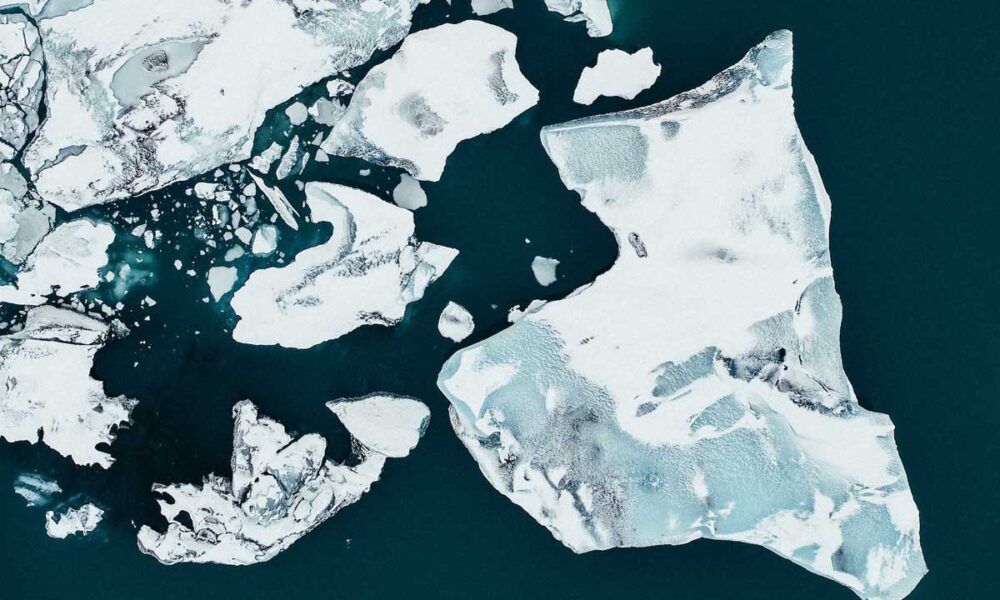
Did you know that women represent just 38 per cent of all ocean scientists? A women-led community organisation in the Seaflower UNESCO Biosphere Reserve in the Caribbean, is working to restore some of the most important marine ecosystems in the world and paving the way for bigger women’s representation in ocean science.
Known as ‘the island in the Sea of the Seven Colors’, San Andres is the biggest island in the Seaflower, containing part of one of the richest coral reefs in the world
San Andres itself is a coral island, meaning it was geologically built by organic material derived from skeletons of corals and numerous other animals and plants associated with these colonial organisms. These types of islands are low land, being mostly only a few metres above sea level, surrounded by coconut palms and white coral sand beaches.
It is no coincidence that this Colombian island is a world-class scuba diving destination with crystal clear waters, and a tourist hub visited by over a million people each year.
But being so ‘in demand’ has a key downside: San Andres’ unique ecosystems and natural resources have been deeply impacted. This is something that biologist and professional diver Maria Fernanda Maya has witnessed first-hand.
A community protecting the ocean
“I have seen San Andres change in the past 20 years; the decrease of fish and coral cover has been quite high. Just like the rest of the world, we have experienced a very large demographic explosion, and the pressure on our resources is increasing,” she tells UN News.
Ms. Maya has been diving and working most of her life to protect the treasures of the Seaflower Biosphere Reserve. She is the director of Blue Indigo Foundation, a women-led community organization that works towards the sustainable development of the San Andres Archipelago, and the protection and restoration of its marine ecosystems.
She says she decided to create the foundation because she believes that the local community must lead the protection of its own resources.
“I have worked for many international and national-led environmental projects in the past, and what happens is that people come, do a timed project, and then leave. And then there is no way for the local community to continue it,” the biologist explains.
Ms. Maya works alongside scientific coordinator Mariana Gnecco, who is her partner in the foundation.
“I am an islander; I formed a relationship with the ocean before I was even born. I’ve always known I never want to be far from the sea,” she tells UN News.
Ms. Gnecco has been freediving since she was just 10 years old, and, like Ms. Maya, got her scuba certification before the age of 14 and later graduated from university as a biologist. She is now also pursuing her PhD.
Women in marine science
According to UNESCO, women engage in all aspects of ocean interaction, yet in many parts of the world, women’s contributions – both towards ocean-based livelihoods like fishing, and conservation efforts – are all but invisible as gender inequality persists in the marine industry as well as the field of ocean science.
In fact, women represent just 38 per cent of all ocean scientists and further, there is very little data or in-depth research on the issue of women’s representation in the field
Both Ms. Maya and Ms. Gnecco can attest to this.
“Men are the ones usually leading marine science and when there are women in charge they are always doubted. Somehow, it’s good to have them as assistants, or in the laboratory, but when women lead the projects, I have always felt there is some kind of pushback. When a woman speaks with passion ‘she is getting hysterical’; when a woman makes unconventional decisions, ‘she is crazy’, but when a man does it, it is because ‘he’s a leader’”, denounces Ms. Maya.
She says that because this has been an unwritten truth that women grapple with, she worked hard at the Foundation to create and nurture an atmosphere that is the opposite.
“We have been able to harmonize the work between women and men partners, recognizing, valuing and empowering the feminine forces, as well as what men have to offer,” Ms. Maya stresses.
“Our opinions, our expertise, and our knowledge have been overlooked for so many years that being able to lead a project like this now means a lot. It symbolizes a [a great deal] in terms of equality and inclusion. Although we still have a long way to go because women in science are still undermined a lot of the time, I think we are on the right path to tackle that problem for good,” echoes Ms. Gnecco.
Saving the coral reefs
On the day the Blue Indigo biologists met with the UN News field reporting team, Ms. Maya and Ms. Gnecco braved a non-stop torrential downpour caused by a cold front in San Andres, a common occurrence during the Atlantic hurricane season.
That morning, we thought it might be impossible to report this story because the rain had turned the island’s streets into rivers, and some of the areas we needed to reach had been turned into mud pits.
“And they say women are scared to drive,” Ms. Maya said with a sly laugh when she picked us up on the way to one of the restoration sites they are working on as one of the local implementers of the nationwide project “One Million Corals for Colombia”, that aims to restore 200 hectares of reef across the country.
Earlier that morning, all diving on the island had been halted due to the weather, but conditions (at least on the water) did eventually improve, and authorities turned the red flag yellow.
That news sparked a mini celebration among a group of eager student divers who thought their day was ruined.
Meanwhile, the rest of us put on scuba gear and walked toward the shore in the (still) pouring rain.
“Once you’re underwater, you are going to forget about this grey day. You’ll see!” Ms. Maya said.
And she couldn’t have been more right. After taking the plunge from the rocky (and slippery) coral coast on the west side of the island, we experienced incredible calm beneath the waves.
The visibility was extremely good, and the biologists took us through some of the rope-type coral nurseries they were working on where Acropora coral fragments are growing. We also saw some of the already-transplanted coral within the stunning reef of San Andres.
Blue Indigo Foundation works closely with diving schools on the island, and they contribute to their restoration efforts. The NGO also teaches specialized courses in restoration for international divers several times a year.
“People come over to see our project and learn and they get engaged easier because then they ask us for the coral. ‘Oh, how’s my coral doing? The one we planted on the reef, how’s it doing?’,” Mariana Gnecco explains, adding that when people see the organisms thriving, it helps to raise general awareness.
The corals within the Seaflower Biosphere Reserve have been declining since the 70s, fueled by the rise in the temperature and acidification of the water, caused by excessive carbon emissions and consequent climate change.
“Those are the global threats, but we also have some local threats that are harming the reef, for example, overfishing, bad tourism practices, boat collisions, pollution, and sewage disposal,” underscores Ms. Gnecco.
Raizal people’s efforts and sustainable tourism
By definition, UNESCO Biosphere Reserves are de facto centres for learning about sustainable development. They also provided an opportunity to examine up-close the changes and interactions between social and ecological systems, including the management of biodiversity.
“When a biosphere reserve is declared, it means that it is a special place, not just because of its biodiversity, but also because there’s a community that has a special connection with that biodiversity, a connection that’s been going for decades with a cultural and historical value,” Ms. Gnecco explains.
The Seaflower is very special, she adds, telling us that it comprises 10 per cent of the Caribbean Sea, 75 per cent of Colombia’s coral reefs and that it’s a hotspot for shark conservation.
“The local community – the Raizal people, that have been living here for generations – have learned how to relate to these ecosystems in a healthy and sustainable way. This is our way of living for both Raizal and other residents. We depend completely on this ecosystem and on its biodiversity, that’s why it’s important and special”, the biologist adds.
The Raizal are an Afro-Caribbean ethnic group living in the islands of San Andrés, Providencia and Santa Catalina off the Colombian Caribbean Coast. They are recognized by the Government as one of the Afro-Colombian ethnic groups.
They speak San Andrés-Providencia Creole, one of many English Creoles used in the Caribbean. 20 years ago, the Raizal represented over half of the island’s population. Today, the general population is nearly 80,000, but the Raizal make up about 40 per cent, due to a high migration influx from the mainland.
Raizal Marine Biologist and researcher Alfredo Abril-Howard also works at Blue Indigo foundation.
“Our culture is closely tied to the ocean. The fishermen are the first to notice changes in the coral – for example, they notice that healthy reefs attract more fish. They can describe a vivid picture of the way the reefs looked in the past…no one understands the importance of our reefs better than them,” he underscores.
The expert says that he believes there is a major socioeconomic issue in San Andres: other than tourism, there are very few ways for his people to make a living.
“Tourism keeps growing and most economic activities revolve around it. So, we need more fish because there are more tourists, so now we catch fish of any size affecting the ecosystem”, he says, emphasizing that better tourism management could generate better economic opportunities for locals while letting the reef flourish at the same time.
Mr. Abril-Howard explains that diving, if sustainably managed, can also have an impact on the ecosystem. It can also help to raise awareness about restoration efforts and at the same time give back to the reef.
“We need a change in the way we do our tourism. Restoring our reefs is important, but we also need to make visitors aware that it is there, and that it is not a rock, It is a living being and that they shouldn’t step on it. These are small things that can benefit the future coral cover. We also need to show people that there is more to this island than coming to party and get drunk, so they can learn something,” he says.
A job for ‘superheroes’
For Camilo Leche, also Raizal, coral restoration efforts are now a part of his life as a fisherman.
“I have been fishing for over 30 years. I remember seeing coral bleaching for the first time – you know when coral starts turning white – and thinking that it was because the coral was getting old, like we get white hairs. But now I understand it is because of climate change,” he told us just before going on his morning fishing expedition.
“Before I could see beautiful giant corals around here and it was so easy to find lobster and big fish, now we have to go further and further to find them”, he adds.
Mr. Leche says that he hopes that world leaders can put their ‘hands on their hearts and in their pockets’ to finance more restoration efforts such as the one undertaken by the Foundation, which he now helps.
“I have learned how to fragment corals, to put them in the ropes. We also go out to make the transplants. And those little pieces are now becoming so big and beautiful, when I see them, I feel so proud of it. I feel like a superhero”.
Swimming against the tide
San Andres is not only losing its coral reef cover and fish banks, but the island also faces coastal erosion and is vulnerable to sea level rise and extreme weather events such as hurricanes.
All these are destroying infrastructure and reducing the island’s beautiful beach cover. In some areas, locals say that before they could play a football game in places where only a meter of beach is now seen.
The ecosystems Blue Indigo works to restore are essential to protect the community during extreme weather events.
For example, Colombian scientists were able to prove how the mangrove protected San Andres during hurricanes Eta and Iota in 2020, among other ways by reducing wind speeds by over 60 km/h.
At the same time, coral reefs can reduce by nearly 95 per cent the height of the waves coming from the east of the Caribbean Sea, as well as reduce their strength during storms.
“We know our restoration efforts can’t bring back the coral reef in its totality, because it is such a complex ecosystem. But by growing certain species we can have a positive impact, bring back the fish and ignite these organisms’ natural capacity to restore themselves,” says Blue Indigo chief Maria Fernanda Maya.
For Mariana Gnecco, it is about aiding the reef to survive during a transformation of its environment happening due to climate change.
“What we need is a functional ecosystem. We are trying to at least give it a helping hand so it can adapt to climate change. The ecosystem is going to change, that’s going to happen, but if we help it will happen at least in a way that is not going to die completely”, she says.
Both the UN Decade for Ecosystem Restoration and the UN Decade of Ocean Science for Sustainable Development, both of which began in 2021 and will run until 2030, aim to find transformative ocean science solutions to guarantee a clean, productive and safe ocean, and to restore its marine ecosystems.
According to UNESCO, mainstreaming gender equality throughout the Ocean Science Decade will help ensure that, by 2030, women as much as men will be driving ocean science and management, helping to deliver the ocean we need for a prosperous, sustainable and environmentally secure future.
“The women that are involved in this are paving the path for all the women that are coming behind. Indeed, the future is problematic, and we are swimming against the current, but I think anything that we can do is better than doing nothing.”
That’s Mariana Gnecco’s message to us all.
Related
You may like
-
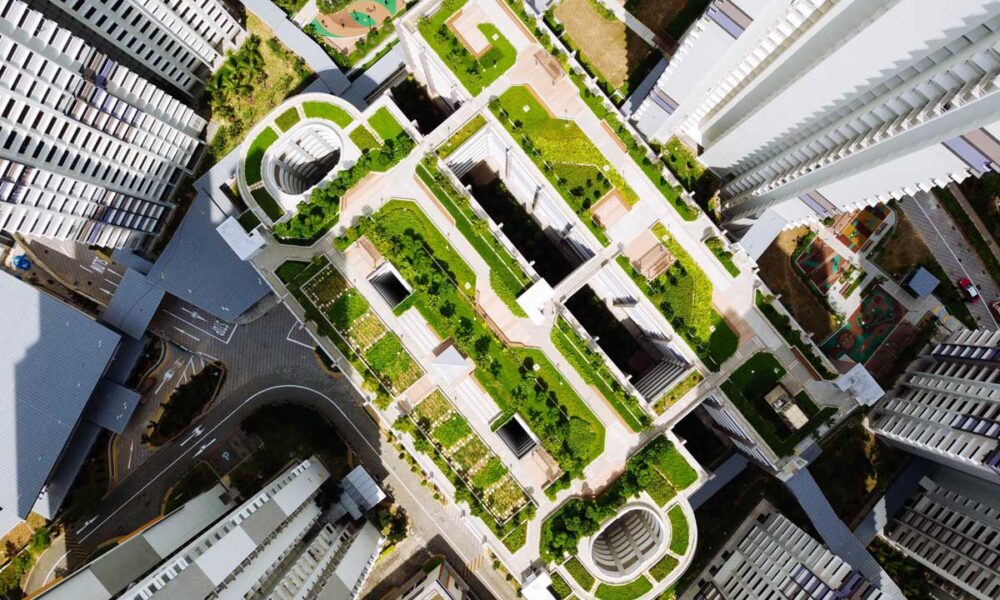

WEF and UN-Habitat Join Forces to Unlock Critical Investment in Cities through Public-Private Collaboration
-
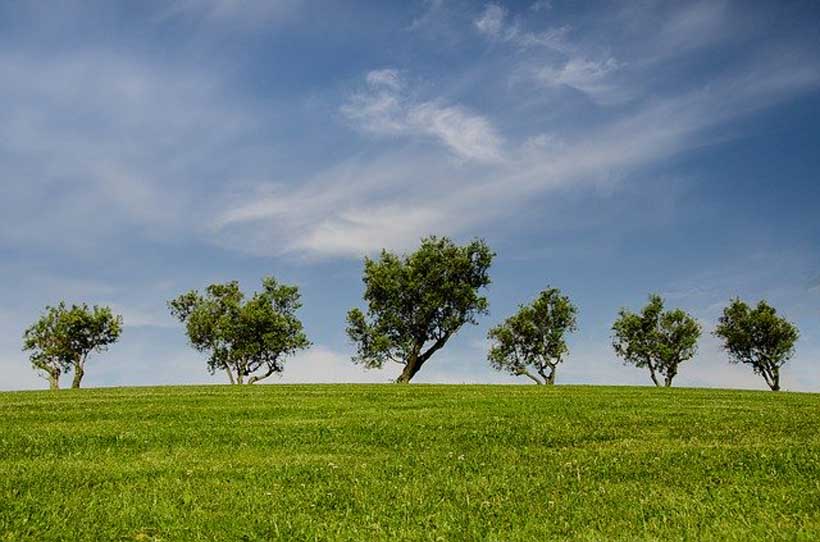

5 ways countries can adapt to the climate crisis
-


The Development of Artificial Intelligence in China: Conclusions
-


Four ways the planetary crisis is impacting mental health
-
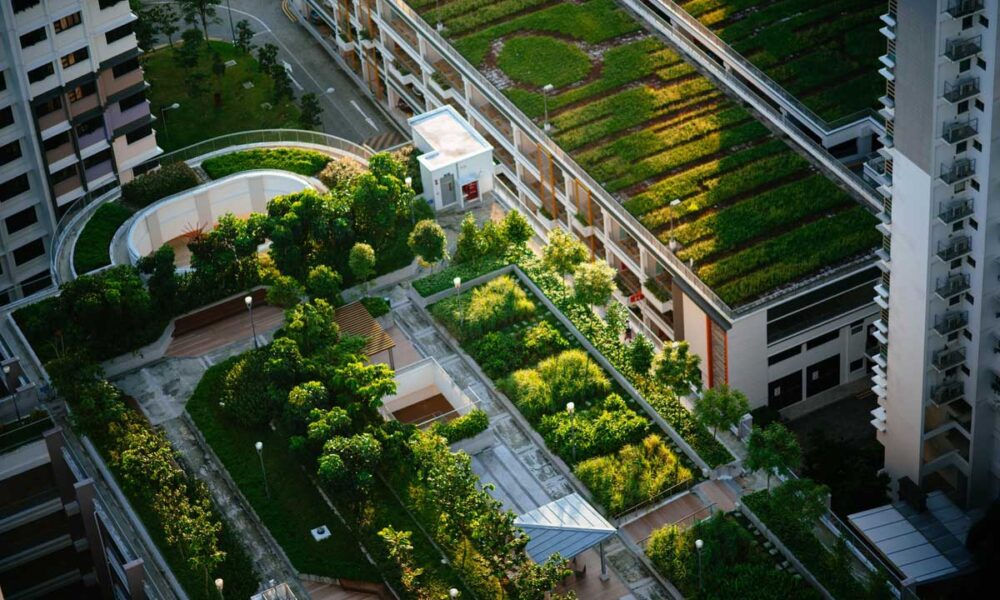

New European Bauhaus under Cohesion Policy: €50 million call for innovative projects in cities
-


The Development of Artificial Intelligence in China: Investment and attention to production
BUSINESS & ECONOMY
IsDB President Advocates for Cultivating Entrepreneurial Leaders
Published
1 day agoon
April 30, 2024By
Editor
By Hafiz M. Ahmed
The 18th Global Islamic Finance Forum recently served as a prominent platform for discussions on advancing Islamic finance and fostering leadership in the entrepreneurial sector. During this notable event, the President of the Islamic Development Bank (IsDB) emphasized the critical need for nurturing entrepreneurial leaders to propel the growth of the Islamic finance industry. This blog post explores the insights shared by the IsDB President, the implications for the future of Islamic finance, and the strategies proposed to develop the next generation of leaders.
Key Highlights from the Forum
The Global Islamic Finance Forum, held annually, brings together experts, policymakers, and stakeholders from across the world to deliberate on the challenges and opportunities within Islamic finance. This year’s focus on entrepreneurial leadership underscores the sector’s evolution and its growing impact on global economies.
The IsDB President’s Vision
- Empowering Entrepreneurs. The IsDB President outlined a vision where empowerment and support for entrepreneurs are paramount. He highlighted the role of Islamic finance in providing ethical and sustainable funding options that align with the principles of Sharia law, offering a robust alternative to conventional financing methods.
- Education and Training. A significant part of the address was dedicated to the importance of education and specialized training in Islamic finance. The President called for enhanced educational programs that not only focus on the technical aspects of Islamic finance but also foster entrepreneurial thinking and leadership skills among students.
- Innovation in Financial Products. Recognizing the rapidly changing financial landscape, the call for innovation in designing financial products that meet the unique needs of modern businesses was emphasized. These innovations should aim to enhance accessibility, affordability, and suitability for diverse entrepreneurial ventures.
- Collaborative Efforts. The IsDB President advocated for increased collaboration between Islamic financial institutions and educational entities to create ecosystems that support and nurture future leaders. This collaboration is essential for developing a holistic environment where aspiring entrepreneurs can thrive.
- Supportive Policies: Lastly, the need for supportive governmental policies that facilitate the growth of Islamic finance was discussed. Such policies should encourage entrepreneurship, particularly in regions where access to financial services is limited.
Implications for the Future
The advocacy for entrepreneurial leaders in Islamic finance is timely, as the industry sees exponential growth and wider acceptance as a viable financial system globally. Cultivating leaders who not only understand the intricacies of Islamic finance but who are also capable of innovative thinking and ethical leadership is crucial for the sustainability and expansion of this sector.
Steps Forward
- Integrating Leadership into Curriculum: Educational institutions offering courses in Islamic finance should integrate leadership training into their curricula.
- Mentorship Programs: Establishing mentorship programs that connect experienced professionals in Islamic finance with emerging leaders.
- Fostering Start-up Ecosystems: Creating supportive environments for start-ups within the Islamic financial framework can encourage practical learning and innovation.
Conclusion
The call by the IsDB President to nurture entrepreneurial leaders in Islamic finance is a step toward ensuring the sector’s robust growth and its contribution to global economic stability. By focusing on education, innovation, and supportive policies, the Islamic finance industry can look forward to a generation of leaders who are well-equipped to navigate the complexities of the modern financial world and who are committed to ethical and sustainable business practices. This vision not only enhances the profile of Islamic finance but also contributes to a more inclusive and balanced global financial ecosystem.
BUSINESS & ECONOMY
Davos Really Comes to the Desert as the WEF Arrives in Riyadh
Published
2 days agoon
April 30, 2024By
Editor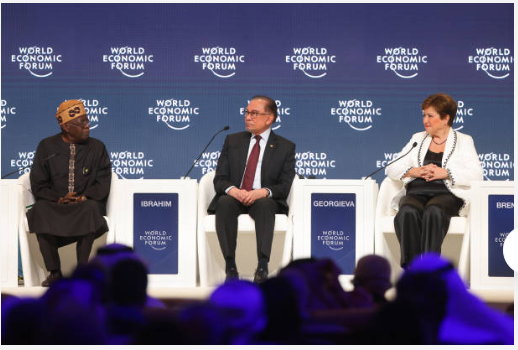
By Frank Kane
The World Economic Forum’s “Special Meeting” got off to a comparatively low-key start in Riyadh on Sunday – the first time Saudi Arabia has staged a full-blown WEF event after a few years of dancing around issues on both sides. Would the security-conscious Saudis allow the “men from Switzerland” the freedom to organise potentially controversial discussions with the abandon they sometimes display in Davos?
Would the Swiss be sufficiently aware of the red lines in the kingdom, all the more vivid in times of heightened regional geopolitical tensions?On the evidence of Day 1, there was sufficient give-and-take on both sides to produce a valuable and thought-provoking addition to the global forums circuit – even if it lacked some of the pizzazz of the Future Investment Initiative gathering known as “Davos in the desert” and the anarchic round-the-clock buzz of the WEF’s annual meeting in the Swiss Alps.
It was certainly smaller and less crowded than the other two events. The Saudi Royal Guard, who assumed responsibility for security at the Ritz-Carlton conference complex, ensured an orderly event, although some members of the international media had difficulty getting the necessary security clearance.
The theme of the two-day forum is “global collaboration, growth and energy for development”, which is a neat way of encapsulating the biggest issue of the day in global economic and politics: will geopolitics derail progress on climate change and economic development?
Saudi Arabia – at the cockpit of those tensions in the Middle East and a leading energy exporter – is the perfect place to consider the question. Mohammed Al Jadaan, the Saudi finance minister, set the tone in an early panel session with the grave warning that ”geopolitical risks are possibly the No 1 risk as you look at the global economy” and urged “agility” by policymakers to head off the threat.
Kristalina Georgieva, managing director of the International Monetary Fund, which is due to open a regional office in Riyadh, hammered home that message in a neat bit of alliteration: “We may end up with this decade being remembered as the Turbulent Twenties, or the Tepid Twenties, when what we actually want is the Transformational Twenties.”
The first of many “elephants in the room” – the risk of confrontation between Israel and Iran arising from the conflict in Gaza – was recognised when Mahmoud Abbas, the Palestinian president, arrived at the opening plenary session. No stranger to the Davos circuit, Abbas repeated his call for the US to push for a two-state solution, saying it was the only way to end the conflict. “Only they can do it,” he declared.
Kristalina Georgieva, IMF managing director, told the forum the decade should be remembered as ‘the Transformational Twenties’ Most of the WEF’s overarching themes came together in the first big set-piece devoted to energy. The session was called “People, policy, finance: realising an equitable energy transition” – and there were elephants aplenty in the chandeliered cavern of the plenary hall.
The hydrocarbon giants were well represented by Prince Abdulaziz bin Salman, Saudi Arabia’s energy minister, and his Qatari counterpart Saad Al Kaabi, as well as Darren Woods and Vicki Hollub, CEOs of ExxonMobil and Occidental, respectively. You had to feel sorry for Kadri Simson, the Estonian politician and EU energy commissioner, as she pitched a decidedly different view from her co-panellists. But Børge Brende, the WEF president and the session’s moderator, did his best to even up the odds. It was a clash between those destined for either “hydrocarbon hell or green heaven” – in the unattributable sarcasm of one senior energy policymaker – and though the debate stayed within civilised bounds, it had its moments.
Al Kaabi accused the environmental lobby of “demonising oil and gas for decades”; Woods called for an end to the “propaganda and politics”. The panel became heated when it came to the issue of what was the real “elephant in the room”. Was it coal? Or the cost of energy transition? Or subsidies for fossil fuels? Prince Abdulaziz cut through the rhetoric with the announcement that he had detected the “camel in the room”: the fact that the campaign against climate change cannot be waged within national boundaries, but has to be global.
Towards the end of the day a frisson went through the forum as it was whispered that Crown Prince Mohammed bin Salman, Saudi Arabia’s prime minister and the patron of the event, was on his way. He duly arrived, oversaw a private meeting of forum dignitaries and departed, with much security fanfare.
At the end of Day 1, I was just a little underwhelmed. The clinical Swiss lines of the WEF signage did not quite gel with the Arabic splendour of the King Abdulaziz International Conference Centre. I’m sure it just needs time.
Frank Kane is Editor-at-Large of AGBI and an award-winning business journalist. He acts as a consultant to the Ministry of Energy of Saudi Arabia and is a media adviser to First Abu Dhabi Bank of the UAE
BUSINESS & ECONOMY
Dangote, Air Peace and the Patriotism of Capital
Published
1 week agoon
April 23, 2024By
Editor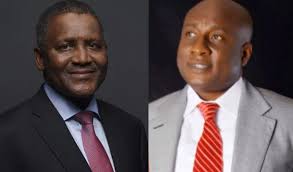
By Chidi Amuta
Money is perhaps a homeless vagrant. It has no nationality or permanent homestead in real terms. It goes and stays only where its masters are wise, prudent and far sighted. But in a world dominated by nations and their interests, real money is first a national asset and tool of governance and sovereign assertion. When money thus becomes a source of power, the nation whose flag the conquering company flies shows up to claim its own. Apple, Microsoft, Tesla, Coca Cola are synonymous with America. It is not because every American can walk off with a can of Coke from the supermarket without paying for it but because somewhere along the way, brand and nation have become fused and interchangeable. Every successful Business may aspire to an international identity but when the chips are down, every successful business needs to be anchored first on a specific sense of sovereign belonging. Ultimately, then, the companies to which sovereign wealth is usually ascribed have a final responsibility to that nation or sovereignty in times of trouble or goodness.
Make no mistake about it. Businesses are in business to succeed as businesses. To succeed as a business is to make tons of profit and invest in even more business and wealth creation. Sensible companies do not always overtly toe the government’s line. They instead buy into the hearts and minds of the citizens through the products they offer and how friendly their prices are.
Two Nigerian brands have recently stepped forward to identify with the citizens of our country in this moment of grave challenge and desperate self -inflicted hardship. Dangote and Air Peace are now on record as having risen to use their products, brand presence and pricing strategies to identify with and ameliorate some of the harrowing difficulties that Nigerians are currently going through.
The worst moments of our present economic travail may not be over just yet. The epidemic of hunger still looms over the land. Innocent people are still being trampled to needless death at palliative food centers. Some are getting squeezed to death while scrambling for tiny free cash. Inflation figures just got even worse at over 33.4%. Those who fled the country in awe of rampaging hardship have not yet started returning or regretting their decisions to flee. Most Nigerians, rich and poor alike, are still needing to be convinced that the curse of recent hopelessness can be reversed any time soon.
Yet out of the darkness and gloom that now pervades our national mood, a tinge of sweetness has begun to seep into the air. The exchange rate of the Naira to major currencies has begun heading south. The dollar, which at the worst moments in recent times exchanged for as low as N2, 300 to a US dollar, has climbed up in value. As at the time of this writing, a little over N1,000 can fetch you the same miserable US dollar. That may not sound like paradise yet since it is still worse than the worst of the Daura emperor. Most Nigerians are praying that Tinubu should minimally take us back to the Buhari days in terms of the exchange rate and relative food security. We are still far from there.
What has Dangote got to do with it all? The removal of fuel subsidy had unleashed an astronomical hike in energy and fuel prices. While motorists and transporters wept and wailed at the gas stations, the price of nearly everything else went through the roof. Since public power supply remains as epileptic or absent as in the 1970s or worse, we have been living in a virtual generator republic that is dependent on diesel and petrol generators. The price of diesel in particular jumped through the roof. Industrial production suffered just as transportation and haulage costs became unbearable. Every high cost was passed down to the suffocating hapless citizens.
Fortuitously, the gigantic Dangote refinery complex was coming on stream in a time of great difficulty. Somehow, the hope was alive that the Dangote refinery would come on stream with a bit of good news on the pricing of gasoline and diesel. But no one knew for sure what Mr. Dangote’s cost accountants had in stock especially with the devilish exchange rate that reigned in the first nine months of the Tinubu tenure.
Energy and fuel prices were off the roof. A liter of diesel went for as high as N1,650 in some places. Gasoline was not any better. Those who wanted to keep their homes powered from generators needed troves of cash to procure diesel whose prices kept going up as the dollar exchange rate escalated. Factories fared worse.
Refreshingly, Mr. Aliko Dangote whose mega billion dollar refinery in Lagos has just started producing petroleum products has a bit of good news for all Nigerians. He has reduced the price of diesel from the mountain pe58% to a more considerate N1,000 per liter, nearly a 58% reduction in price in less than a week. The prospect is good that when his gasoline products begin to flow through the pumps. Mr. Dangote may have even better news at the gas stations. Along with his fellow cement oligarchs had promised to deliver cement to Nigerians at a more friendly price. The full benefit of that promise is still a long way away.
It needs to be said in fairness to Dangote as a brand that more than any other single company in Nigeria, it has invested in the things that touch the lives of the people most immediately. Sugar, salt, fertilizer, tomato puree, fruit juices, cement and now petroleum products. No other single Nigerian brand can boast of a wider and more expansive range of socially relevant products than Dangote.
In direct response to the prevailing hunger and hardship in the land, Mr. Dangote has himself stepped forward to provide millions of bags of rice and other food items to Nigerians across the length and breadth of the country as humanitarian palliatives. In terms of the human face of capitalism, Dangote would seem to have perfected an enlightened self interest above his peers.
Just when life was about to gradually grind to a halt, a bit of good news has come from unusual quarters. In a nation that has grown dependent on a feeding bottle tied to the beast of external suppliers of everything from tooth picks to civilized coffee, the belief persisted that all good news can only come from abroad. Nigerians could only hope to enjoy more friendly prices for the things that make them happy if our foreign partners changed their mind. Not any more. It requires pointing out that the Nigerian spirit is too expansive to be bottled up within our borders just because air tickets are unaffordable. The urban- based Nigerian wants to go abroad for business, on holidays or just to flex!
At the worst of the recent moments, a return Economy Class ticket to nearby London sold for as much as N3.8m-N4million. Major international airlines insisted that the Central Bank had seized and was sitting on their dollar ticket sales proceeds. They needed to keep the high fares to hedge against the uncertainties that were everywhere in the Nigerian air. Nigerian travellers were being punished for the bad fortunes of their national currency and the untidy book keeping habits of the Central Bank.
Almost from nowhere, Nigeria’s largest international airline, Air Peace, announced a low fare flight into London’s Gatwick Airport. The airport itself is also owned by a Nigerian businessman. The fares were unbelievably low, as low as N1.2 million in some cases against the exploitative fares of all the major foreign airlines plying that route. Unbelievably, Air Peace pulled off the London Gatwick deal with quite a bit of fanfare and patriotic noise making that set the foreign competitors scampering back to the drawing board. Air Peace floated the Gatwick fare reduction as a patriotic act, more like social responsibility to fellow Nigerians than the plain business sense which is what it really is. It was a drive for volume in a market of low volume driven by high fares.
To drive home the patriotic edge of its revival of international flights, Air Peace rebranded its crew and adorned its senior cabin crew with uniforms that featured the traditional Igbo “Isi Agu” motif. For those who are hard at hearing, the Isi Agu motif on Nigerian traditional outfits is of Igbo ancestry just as the Aso Oke, Adire and Babanriga are South Western Yoruba and Northern Hausa-Fulani respectively. A Nigerian airline intent on striking a recognizable indigenous resonance and identity could adapt any combination of these traditional dress motifs to drive home its original and national identity. The isi Agu features a series of lion heads, obviously severed at a moment of unusual valor. To go on a hunt and successfully kill and decapitate a lion is an undisputed symbol or infact a metaphor for unusual valour and heroism among the Igbo. Therefore the choice of that motif by Air Peace in its new cabin outfit is in fact a modern statement on the unusual heights to which Nigerian enterprise can rise if inspired by a patriotic commitment to national greatness. The Isi Agu is therefore Nigerian national heroism captured in an outfit.
In their recent pricing strategies, neither Dangote nor Air Peace has acted out of pure charity or patriotic feeling. Both are reacting to the pressure of latent demand in a market where the purchasing power has been depressed by economic difficulty brought about by government policy and political exigencies. Yet each of them is intent on being seen as acting out of altruistic patriotic motives. That may be true in the short term.
For every liter of diesel sold, Dangote is saving the Nigerian consumer 60% of the current market price. A savings of 60% is a lot for households and businesses. Similarly, for every Economy Class ticket sold by Air Peace on the London route, the average Nigerian traveller gets to save between N1.3million-N1.6 million. That is an awful lot of relief which travellers can apply to other competing needs in these hard times. No one can deny that these are direct savings and benefits that accrue directly to Nigerian citizens. To that extent, both Dangote and Air Peace can be said to be applying their capital to serve a patriotic end.
It is common capitalist gimmick for companies to apply a percentage of their profit to pursue communally beneficial ends in their territory of operation. Oil companies build schools, hospitals, libraries and other socially beneficial infrastructure in their catchment localities. In normal corporate parlance, that only qualifies as Corporate Social Responsibility (CSR) or targeted social beneficence.
But Dangote and Air Peace are doing something a bit more far reaching. They are shedding handsome percentages of their revenue and therefore profit to fellow Nigerians at a time when such savings are desperately needed and deeply appreciated. That is an instance of capitalism serving a patriotic end over and above its statutory tax obligations to the government. This should be commended.
It does not, however, make these companies any less rapacious as capitalist ventures than any others. They may in fact be investing in better times and bigger profits when the bad days are over. They are investing in the goodwill of the market and therefore deepening their brand penetration and mass sympathy. These are strategies which are far sighted marketing ploys that dig deep into the hearts and minds of generations of consumers.
Ultimately, every capitalist is like a cat; selfish with nine lives and prone to inherent cunning. But, as former Chinese leader Deng Zao Ping said when embracing the free market for his long standing communist nation: “A cat is a cat. It does not matter whether it is a black cat or a white cat. For as long as it catches mice, it is a good cat.”
Dr. Amuta, a Nigerian journalist, intellectual and literary critic, was previously a senior lecturer in literature and communications at the universities of Ife and Port Harcourt.

Nigeria is Pioneering a New Vaccine to Fight Meningitis – Why this Matters

Sudan’s Civil War is Rooted in its Historical Favouritism of Arab and Islamic identity
IsDB President Advocates for Cultivating Entrepreneurial Leaders
Topics
- AGRIBUSINESS & AGRICULTURE
- BUSINESS & ECONOMY
- DIGITAL ECONOMY & TECHNOLOGY
- EDITORIAL
- ENERGY
- EVENTS & ANNOUNCEMENTS
- HALAL ECONOMY
- HEALTH & EDUCATION
- IN CASE YOU MISSED IT
- INTERNATIONAL POLITICS
- ISLAMIC FINANCE & CAPITAL MARKETS
- KNOWLEDGE CENTRE, CULTURE & INTERVIEWS
- OBITUARY
- OPINION
- PROFILE
- PUBLICATIONS
- SPECIAL FEATURES/ECONOMIC FOOTPRINTS
- SPECIAL REPORTS
- SUSTAINABILITY & CLIMATE CHANGE
- THIS WEEK'S TOP STORIES
- TRENDING
- UNCATEGORIZED
- UNITED NATIONS SDGS
Trending
-

 TRENDING11 months ago
TRENDING11 months agoAFRIEF Congratulates New Zamfara State Governor
-

 PROFILE9 months ago
PROFILE9 months agoA Salutary Tribute to General Ibrahim Badamasi Babangida: Architect of Islamic Finance in Nigeria
-

 BUSINESS & ECONOMY3 years ago
BUSINESS & ECONOMY3 years agoThe Climate Crisis is Now ‘Code Red’: We Can’t Afford to Wait Any Longer
-

 BUSINESS & ECONOMY3 years ago
BUSINESS & ECONOMY3 years agoClimate Policy In Indonesia: An Unending Progress For The Future Generation
-

 BUSINESS & ECONOMY3 years ago
BUSINESS & ECONOMY3 years agoIPCC report: ‘Code red’ for human driven global heating
-

 HALAL ECONOMY10 months ago
HALAL ECONOMY10 months agoRevolutionizing Halal Education Through Technology
-
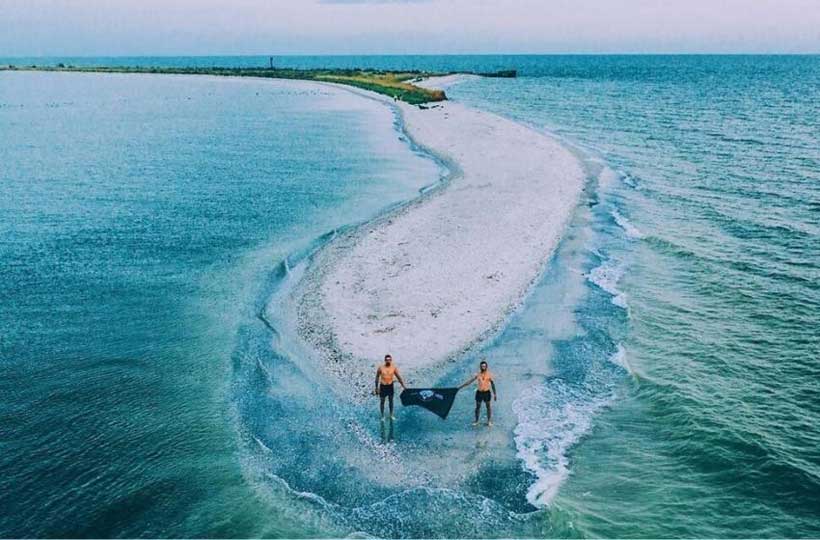
 BUSINESS & ECONOMY3 years ago
BUSINESS & ECONOMY3 years agoThe Black sea protection initiative: What should we remember?
-

 BUSINESS & ECONOMY2 years ago
BUSINESS & ECONOMY2 years agoDistributed Infrastructure: A Solution to Africa’s Urbanization

